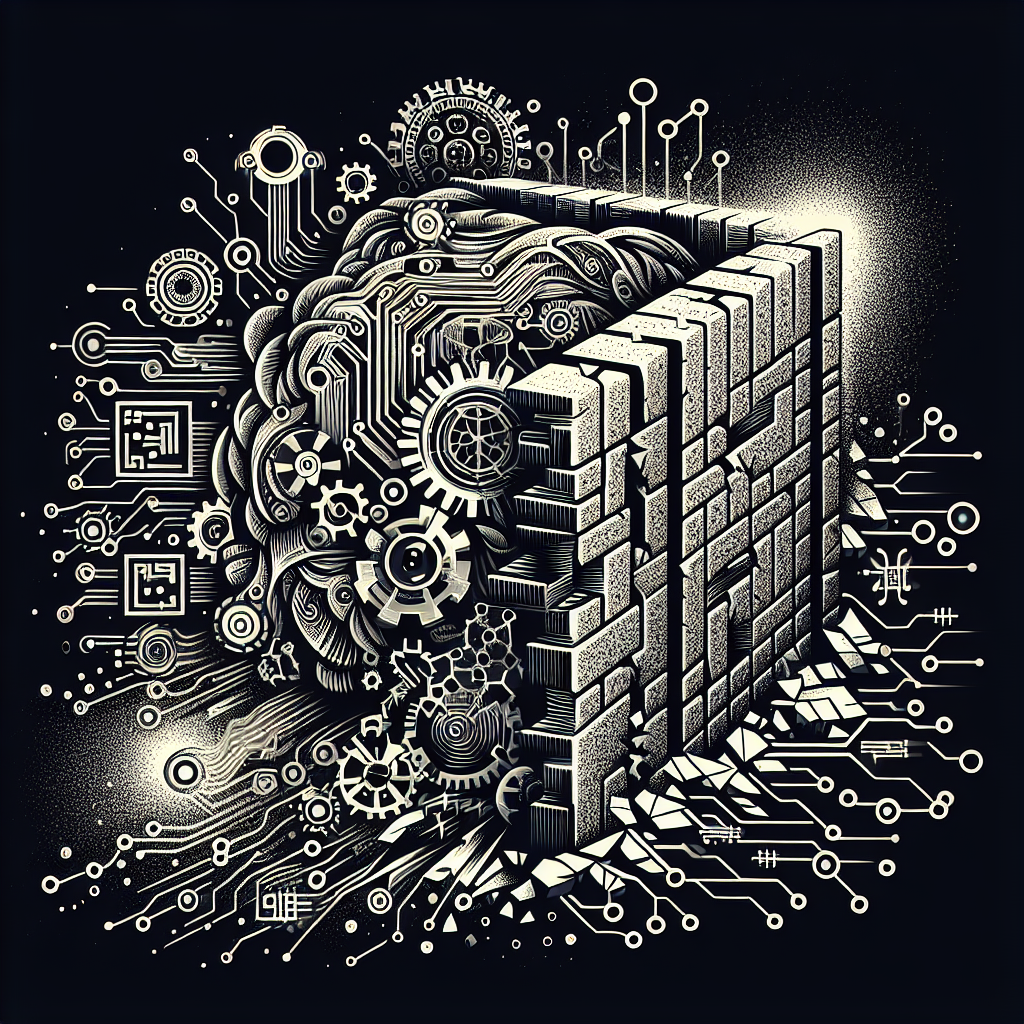Breaking Barriers: How AGI is Pushing the Boundaries of Machine Learning
Artificial General Intelligence (AGI) is a branch of artificial intelligence that aims to create machines capable of understanding and learning any intellectual task that a human being can. While traditional machine learning models have made significant advancements in various fields, AGI promises to take things to the next level by truly mimicking human intelligence in a wide range of tasks.
In recent years, AGI has been making waves in the tech industry, with companies and researchers investing heavily in its development. This article will explore how AGI is pushing the boundaries of machine learning and revolutionizing the way we interact with technology.
Understanding AGI
To understand the impact of AGI on machine learning, it’s important to first grasp the concept of artificial general intelligence itself. AGI refers to a system that possesses the ability to learn and understand any intellectual task that a human being can. This includes tasks such as reasoning, problem-solving, perception, and natural language processing.
Unlike traditional AI systems, which are designed to perform specific tasks within a limited scope, AGI aims to replicate the versatility and adaptability of human intelligence. This means that an AGI system should be able to learn and solve a wide range of problems without the need for explicit programming or human intervention.
The development of AGI is a complex and challenging task, requiring researchers to integrate a wide range of technologies and methodologies. Machine learning plays a central role in this process, as it forms the foundation for training AGI systems to learn and adapt to new tasks.
Pushing the Boundaries of Machine Learning
AGI is pushing the boundaries of machine learning in several key ways. One of the most significant advancements is in the area of unsupervised learning, where machines are trained to learn from raw data without the need for labeled examples. This allows AGI systems to discover hidden patterns and relationships in data, leading to more accurate and robust models.
Another area where AGI is making an impact is in the field of reinforcement learning, where machines learn to make decisions by interacting with their environment and receiving feedback on their actions. AGI systems can leverage reinforcement learning to adapt to new tasks and environments, leading to more flexible and adaptive models.
AGI is also driving advancements in natural language processing, enabling machines to understand and generate human language with a level of sophistication and nuance that was previously thought impossible. This has far-reaching implications for applications such as chatbots, translation services, and voice assistants, where natural language understanding is critical.
In addition to these advancements, AGI is also pushing the boundaries of machine learning in areas such as computer vision, robotics, and healthcare. By combining state-of-the-art algorithms with powerful hardware and vast amounts of data, AGI systems are able to tackle complex problems and achieve levels of performance that were previously unattainable.
Challenges and Opportunities
While the potential of AGI is vast, there are also significant challenges that must be overcome in order to realize its full potential. One of the key challenges is the need for massive amounts of data to train AGI systems effectively. This requires access to large datasets that are diverse, representative, and labeled with high-quality annotations.
Another challenge is the complexity of AGI systems themselves, which often consist of multiple interconnected components that must work together seamlessly. This requires researchers to develop new techniques for integrating different modules and ensuring that they operate in harmony to achieve the desired results.
Despite these challenges, the opportunities presented by AGI are immense. By creating machines that can learn and adapt like humans, we have the potential to revolutionize industries such as healthcare, finance, transportation, and entertainment. AGI systems could help us tackle some of the most pressing challenges facing society, from climate change to healthcare disparities.
FAQs
Q: What is the difference between AGI and traditional AI?
A: Traditional AI systems are designed to perform specific tasks within a limited scope, while AGI aims to replicate the versatility and adaptability of human intelligence. AGI systems can learn and solve a wide range of problems without the need for explicit programming or human intervention.
Q: How are AGI systems trained?
A: AGI systems are trained using a combination of supervised, unsupervised, and reinforcement learning techniques. Supervised learning involves training the system on labeled examples, while unsupervised learning allows the system to learn from raw data without labels. Reinforcement learning involves training the system to make decisions by interacting with its environment and receiving feedback on its actions.
Q: What are the potential applications of AGI?
A: AGI has the potential to revolutionize industries such as healthcare, finance, transportation, and entertainment. AGI systems could help us tackle some of the most pressing challenges facing society, from climate change to healthcare disparities. Additionally, AGI could enable advancements in areas such as natural language processing, computer vision, and robotics.
Q: What are the key challenges facing the development of AGI?
A: Key challenges facing the development of AGI include the need for massive amounts of data to train systems effectively, the complexity of AGI systems themselves, and the ethical implications of creating machines with human-like intelligence. Researchers are actively working to address these challenges and unlock the full potential of AGI.
In conclusion, AGI is pushing the boundaries of machine learning and revolutionizing the way we interact with technology. By creating machines that can learn and adapt like humans, we have the potential to transform industries, tackle pressing societal challenges, and unlock new possibilities for innovation. While there are challenges to overcome, the opportunities presented by AGI are vast, and researchers are working tirelessly to realize its full potential.

